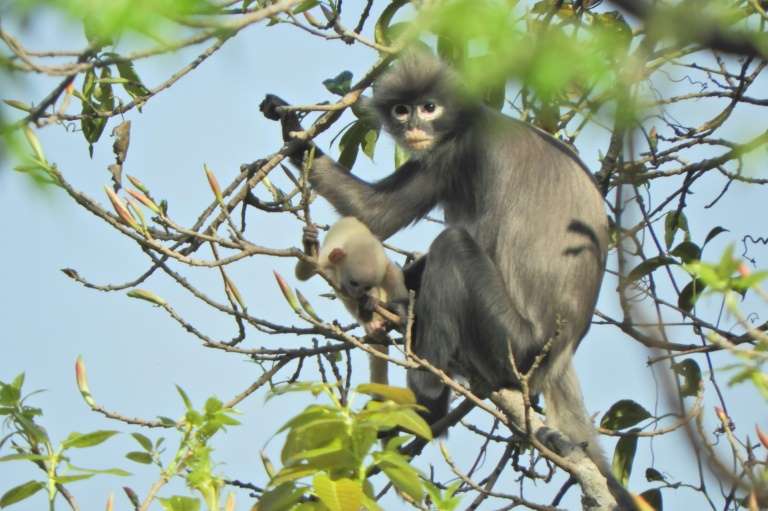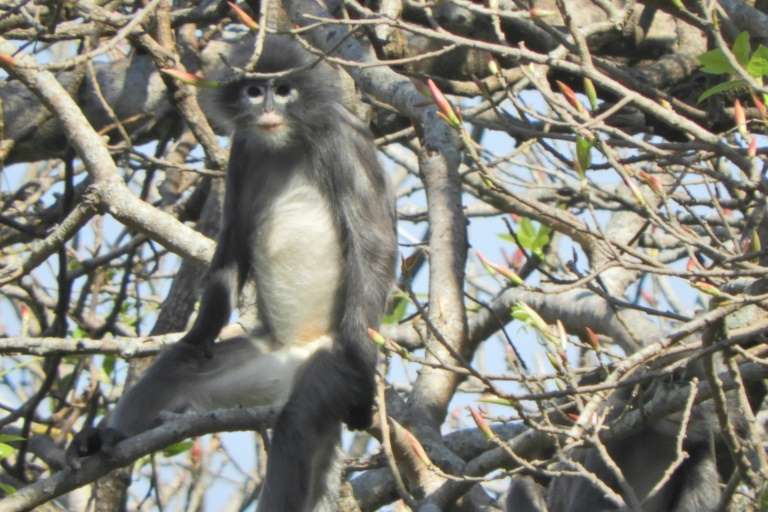In a rare find, scientists have identified a new species of primate, a lithe tree-dweller living in the forests of central Myanmar with a mask-like face framed by a shock of unruly grey hair.
The Popa langur -- named for an extinct volcano home to its largest population, some 100 individuals -- has been around for at least a million years, according to a study detailing the find, published Wednesday in Zoological Research.
But with only 200 to 250 left in the wild today, experts will recommend that the leaf-eating species be classified as "critically endangered".
"Just described, the Popa langur is already facing extinction," said senior author Frank Momberg, a researcher at Flora & Fauna International (FFI), in Yangon.
Throughout its range, the lithe monkey with chalk-white rings around its eyes is threatened by hunting and habitat loss, he said in a statement.
The first evidence of the new species was found not in the wild but the backrooms of the London Natural History Museum, where genetic analysis revealed that specimens gathered more than a century ago when Burma was a British colony were something new.
Samples of Popa poop collected by Momberg and his colleagues in the forest matched those from the museum, and showed that the previously unknown langur was still roaming the wild.
The reclusive monkeys were finally captured on film in 2018, revealing their distinctive fur colouration and markings.
|
|
| Popa langur (Trachypithecus popa) is seen on a tree branch on Mount Popa, in Myanmar. Photo: AFP |
Trachypithecus popa, or T. popa for short, has a grey-brownish and white belly, with black hands and wrists that look a bit like gloves.
Its agile tail -- at nearly a metre -- is longer than its body, with the creature weighing about eight kilograms (18 pounds).
"Additional field surveys and protection measures are urgently required and will be conducted by FFI and others to save the langurs from extinction," said Ngwe Lwin, a primatologist with FFI's Myanmar programme.
Scientists at the German Primate Centre in Goettingen, Germany co-led the research.
There are more than 20 species of langur in the world, several of them critically endangered.
The best known among them is the grey or Hanuman langur, named for the wandering monkey god prominent in the Hindu epic Ramayana.
At least two dozen primates have been discovered since the beginning of the century, many through genetic analysis revealing that species similar in appearance were in fact distinct.
Primates are divided into two suborders. Strepsirrhines -- from the Greek for twisted-nose -- includes lemurs and lorisids.
The second suborder, haplorhines, or "dry-nosed" primates, includes the tarsier, apes and langurs.
There are more than 20 critically endangered species of primate in the world today.





















































